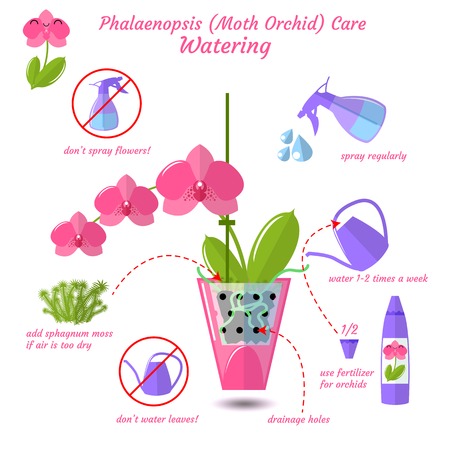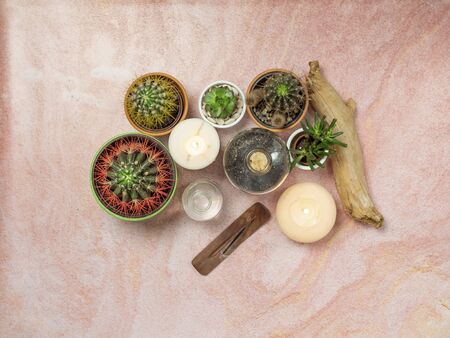Understanding Skin Allergies and Rashes in India
Skin allergies and rashes are prevalent health concerns for many people across India, impacting all age groups. The unique Indian climate, which ranges from humid coastal areas to dry arid regions, directly affects skin health. High temperatures and humidity can lead to excessive sweating, blocked pores, and increased susceptibility to fungal and bacterial infections—common triggers for allergic reactions and rashes. Additionally, rampant air pollution in urban centres like Delhi, Mumbai, and Bengaluru introduces numerous allergens and irritants into the environment, worsening conditions such as eczema, contact dermatitis, and urticaria.
Cultural practices also play a significant role. Many Indians use traditional cosmetics, herbal oils, and natural dyes such as mehendi (henna), which, while culturally significant, can sometimes cause skin sensitivities or allergic reactions. Frequent use of synthetic fabrics and jewellery that contain nickel or artificial colourants can further contribute to the development of rashes among sensitive individuals. Moreover, the widespread practice of walking barefoot—especially in rural areas—exposes skin to potential allergens like dust mites, plant pollens, and insect bites.
Understanding these factors is crucial when looking for effective solutions. Ayurveda offers time-tested natural remedies tailored to the Indian context, addressing both the root causes and symptoms of skin allergies and rashes. The holistic approach considers not just external treatments but also dietary habits and lifestyle modifications suitable for Indias diverse conditions.
2. Ayurvedic Perspective on Skin Health
When it comes to skin allergies and rashes, Ayurveda offers a unique lens that is deeply rooted in Indian tradition. In Ayurveda, the skin is not just an outer covering but a reflection of one’s internal health. The ancient texts describe skin ailments as a result of imbalances in the three doshas: Vata, Pitta, and Kapha. Each dosha represents different bodily energies, and their harmony is essential for clear and healthy skin.
The Role of Doshas in Skin Conditions
According to Ayurvedic wisdom, an imbalance in any of these doshas can manifest as various skin problems. For example, excessive Pitta—often aggravated by hot weather or spicy foods common in India—can lead to inflammation, redness, and rashes. Vata imbalance might cause dry, flaky skin, while Kapha issues can result in oily skin and itching. This doshic approach helps pinpoint the root cause rather than just treating symptoms.
Common Dosha Imbalances & Their Effects on Skin
| Dosha | Symptoms on Skin | Common Triggers (India) |
|---|---|---|
| Pitta | Redness, rashes, burning sensation | Spicy food, hot climate, stress |
| Vata | Dryness, roughness, cracking | Cold winds, irregular meals, dehydration |
| Kapha | Oily skin, itchiness, swelling | Humid weather, heavy diet, lack of exercise |
The Importance of Traditional Indian Wisdom
Modern medicine often focuses on quick relief through creams or tablets. However, Ayurveda goes deeper—addressing lifestyle habits and dietary patterns that are especially relevant in India’s diverse climates and food traditions. Incorporating local herbs like neem, turmeric (haldi), and tulsi along with traditional routines such as abhyanga (oil massage) ensures that treatments are both natural and culturally resonant. This holistic approach underlines why traditional Indian wisdom remains vital for lasting relief from skin allergies and rashes.

3. Top Ayurvedic Herbs and Ingredients for Relief
Indias diverse landscape has blessed us with a rich heritage of Ayurvedic remedies, especially for skin allergies and rashes. Among the many natural ingredients, certain herbs stand out due to their effectiveness and widespread use across regions.
Neem (Azadirachta indica)
Neem, known as the Sarva Roga Nivarini or the curer of all ailments in Ayurveda, is a staple in Indian households. Its leaves, oil, and bark are traditionally used for their potent antibacterial and antifungal properties. Applying neem paste or bathing in neem water is a popular remedy for soothing itchy rashes and preventing infections, especially during humid summers.
Turmeric (Haldi)
No discussion about Indian skin care is complete without turmeric. This golden spice is celebrated for its anti-inflammatory and antiseptic qualities. Traditionally, a paste of turmeric and water (or milk) is applied to allergic patches or rashes to calm irritation and speed up healing. Turmeric is also consumed internally in “haldi doodh” (turmeric milk) to boost immunity and reduce inflammation from within.
Aloe Vera (Ghritkumari)
Aloe vera grows abundantly across India and is treasured for its cooling and moisturizing effects. The gel extracted from its leaves is directly applied to inflamed or allergic skin for instant relief from burning sensations and redness. In many parts of India, elders recommend using fresh aloe pulp on heat rashes (“garmi ke daane”), particularly for children.
Sandalwood (Chandan)
Sandalwood holds a sacred place in Indian rituals and skincare traditions alike. Its powder or paste is used to pacify aggravated skin due to its anti-inflammatory and soothing properties. Applying chandan paste mixed with rose water is a time-honoured remedy for prickly heat, allergic itching, and facial eruptions—especially in South India where sandalwood is locally sourced.
Traditional Combinations
Often, these herbs are combined for greater effect; for example, a mixture of neem, turmeric, and sandalwood powder can be made into a paste with rose water or cow’s milk for topical application. Such combinations are widely recommended by Ayurvedic practitioners across India as holistic solutions tailored to one’s dosha (body constitution) and local climate.
4. How to Prepare and Apply Home Remedies
When it comes to managing skin allergies and rashes with Ayurvedic solutions, the Indian kitchen is a treasure trove of safe, natural ingredients. Here’s a step-by-step guide for Indian households to prepare and apply effective remedies using items that are usually at hand.
Step-by-Step Preparation of Common Ayurvedic Remedies
| Remedy | Main Ingredients | Preparation Steps | How to Apply |
|---|---|---|---|
| Tulsi & Neem Paste | Fresh Tulsi leaves, Fresh Neem leaves, Water |
|
Apply gently on affected area. Leave for 20-30 minutes before rinsing off with lukewarm water. Use once daily. |
| Haldi (Turmeric) & Chandan (Sandalwood) Pack | Haldi powder, Chandan powder, Rose water or milk |
|
Spread evenly over rashes. Let dry for 15-20 minutes, then wash off with cool water. Repeat every alternate day. |
| Aloe Vera Gel & Coconut Oil Balm | Fresh Aloe Vera gel, Cold-pressed coconut oil |
|
Dab lightly on irritated skin as often as needed. No need to rinse off unless it feels sticky. |
| Methi (Fenugreek) Seeds Soak | Methi seeds, Water |
|
Apply the paste on affected areas for 30 minutes before washing off. Use 2-3 times a week. |
Tips for Safe Application in Indian Conditions
- Patch Test First: Always do a patch test behind your ear or on your inner arm before full application to avoid unexpected allergic reactions.
- Avoid Harsh Scrubbing: Gently pat or spread the paste; never rub vigorously as it can worsen irritation.
- Use Fresh Ingredients: For best results and safety, use fresh kitchen ingredients instead of stale or pre-mixed powders whenever possible.
Precautions While Using Home Remedies at Home
- If symptoms worsen or do not improve after a week of home remedies, consult an Ayurvedic practitioner or dermatologist immediately.
- Avoid these remedies on broken or bleeding skin without medical advice.
Cultural Insight: Why These Remedies Work in India?
The humid climate, dust, and exposure to pollution in India make the skin more susceptible to rashes and allergies. Ayurveda taps into locally available herbs like Neem, Tulsi, and Haldi—renowned for their anti-inflammatory and antibacterial properties—which have been used for generations in Indian homes. The above methods fit seamlessly into daily routines and respect traditional wisdom passed down by our elders.
5. Dietary & Lifestyle Tips from Ayurveda
Choose Foods That Cool and Heal
According to Ayurveda, skin allergies and rashes often stem from an imbalance of Pitta dosha, which represents heat in the body. To counteract this, include cooling foods like cucumber, watermelon, coconut water, and leafy greens in your daily diet. Avoid spicy, oily, and fermented foods that can aggravate Pitta. Instead, opt for traditional Indian foods such as moong dal khichdi, buttermilk (chaas), and sabudana (sago) dishes that are gentle on the stomach and beneficial for sensitive skin.
Adopt a Calming Daily Routine
Ayurveda emphasizes Dinacharya—daily routines that balance your body’s rhythms. Start your day with a glass of lukewarm water infused with a few tulsi leaves or a pinch of turmeric to detoxify your system. Bathe with herbal powders like besan (gram flour) mixed with rose water instead of harsh soaps. Wear loose-fitting cotton clothes to let your skin breathe, especially during humid Indian summers.
Practice Yoga & Pranayama
Yoga is an integral part of Ayurvedic living. Gentle asanas such as Balasana (Child’s Pose), Viparita Karani (Legs-Up-the-Wall), and Shavasana (Corpse Pose) can calm the nervous system and reduce inflammation. Regular practice of Sheetali Pranayama—a cooling breathing technique—helps lower internal heat and soothes irritated skin. Make yoga a part of your morning or evening routine for best results.
Stay Hydrated & Mindful
Hydration is crucial in managing skin allergies in India’s diverse climates. Drink plenty of water throughout the day and consider sipping on herbal teas made with neem, coriander seeds, or chamomile to cleanse your blood naturally. Lastly, manage stress through meditation or simple mindfulness practices; emotional well-being directly impacts your skin health according to Ayurveda.
Key Takeaway for Everyday Life
By making mindful food choices, establishing soothing daily habits, and incorporating yoga into your life, you align yourself with Ayurvedic wisdom to prevent and ease skin allergies—naturally and effectively suited for Indian conditions.
6. Precautions, Limitations, and When to Consult a Doctor
While Ayurvedic natural remedies are popular across India for managing skin allergies and rashes, it is vital to recognise that self-treatment has its boundaries. Understanding the difference between mild reactions and more severe health threats is crucial for effective and safe care.
Recognising Severe Symptoms
In many Indian households, home remedies like neem paste or turmeric application are trusted first steps. However, if you notice symptoms such as rapid spreading of rashes, intense itching, swelling of the face or lips, difficulty breathing, or high fever, these could indicate a serious allergic reaction or infection. Do not ignore such warning signs. Immediate medical attention is necessary in these situations to avoid complications like anaphylaxis or severe dermatitis.
Limitations of Self-Care with Ayurveda
Ayurveda offers valuable insights and time-tested solutions for minor skin issues. Yet, not all conditions can be managed at home. Some herbal ingredients may cause irritation or allergic responses in certain individuals. Furthermore, if the underlying cause is linked to chronic illnesses like diabetes or autoimmune disorders—which are increasingly common in India—home remedies alone will not suffice. Always patch-test new Ayurvedic preparations on a small area before broader use.
When Should You Seek Professional Help?
If your skin allergy persists beyond a few days despite using recommended Ayurvedic treatments, or if the rash worsens after initial improvement, consulting a dermatologist or qualified Ayurvedic practitioner is essential. In rural parts of India where access to specialists may be limited, do not hesitate to visit the nearest government hospital or primary healthcare centre for expert advice. Remember, timely intervention can prevent long-term skin damage and ensure faster recovery.
To sum up, while Indias rich Ayurvedic tradition provides excellent options for mild skin allergies and rashes, always stay vigilant about worsening symptoms. Respect the limitations of self-care and never delay seeking professional help when the situation demands it.

